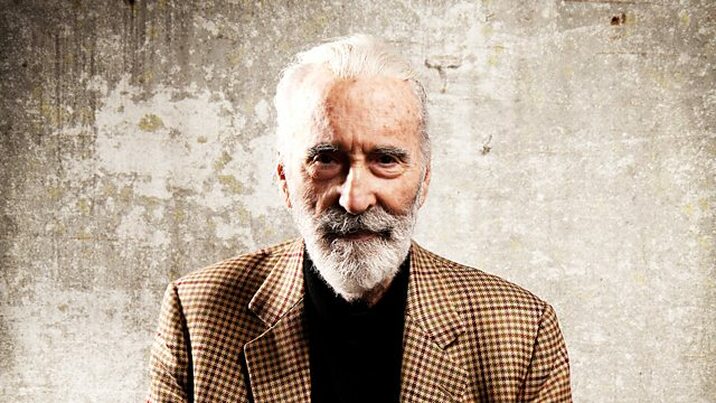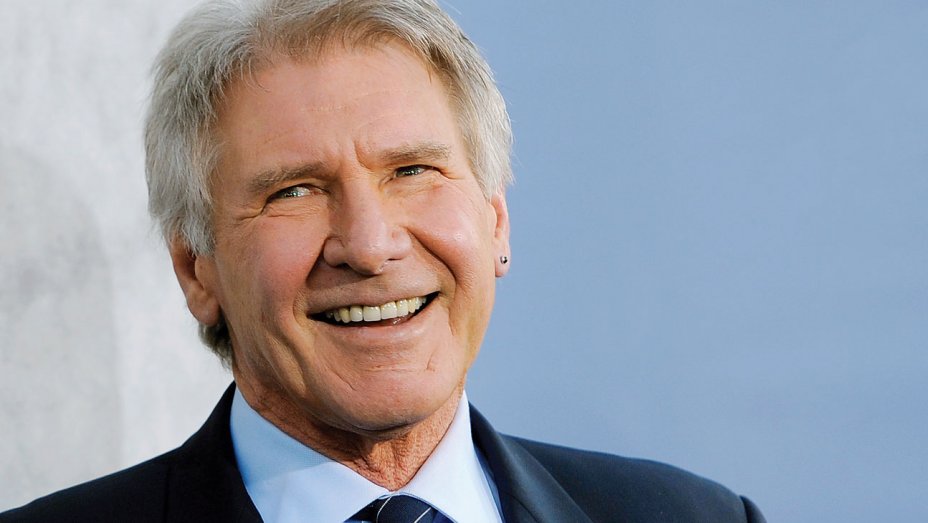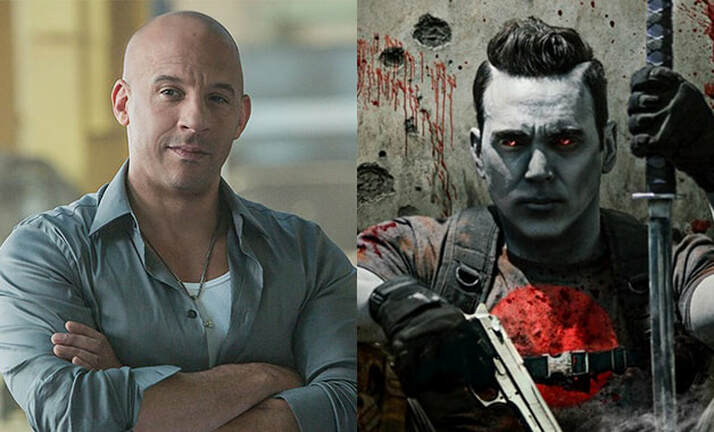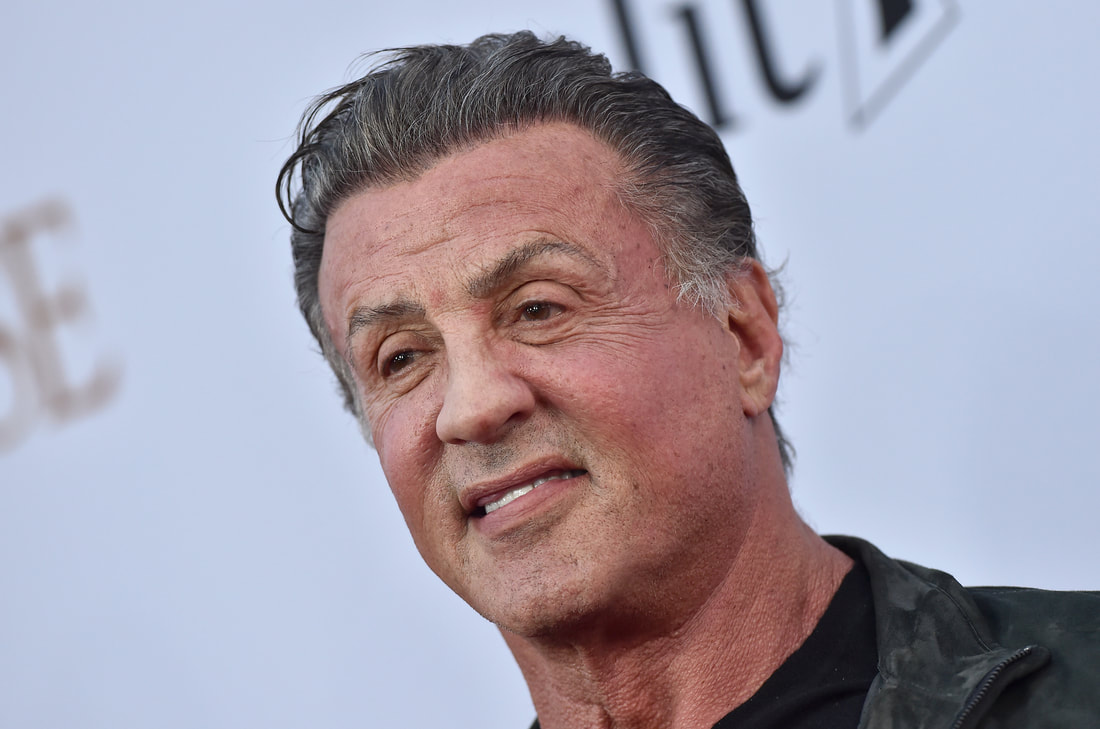Sir Christopher Frank Carandini Lee may just be the king of franchise kings, if we were to solely look at his roles and not the gross of the movies he has been in. What is more astounding, is that outside of these roles, his other non-franchise projects stand up on their own merits and some of them also belonged to other well known franchises. Most notably are the characters of Rasputin in "Rasputin The Mad Monk" (1966), as Kharis the Mummy in "The Mummy" (1959), as Francisco Scaramanga in James Bond "The Man With The Golden Gun" (1974) and as Lord Summerisle in "The Wicker Man" (1973). Sir Christopher Lee is credited as playing 208 roles...for film - not including TV roles and other media and so Sir Christopher Lee we salute you as a major Franchise King.
|
With a career that spanned 70 years in both television and film, there was certainly plenty of opportunity for Sir Christopher Lee to accumulate more ties with franchises than any other actor. And though he started acting from a young age, it wasn't until 1947, one year after ending his service in the R.A.F. did he make his television debut in "Corridor Of Mirrors" . DRACULA It's noteworthy to mention that Lee’s first film for the Hammer horror studio was "The Curse of Frankenstein" (1957) in which he played Frankenstein’s monster with Peter Cushing as Victor Frankenstein. This first tango together would extend into another 19 appearances that would create a professional and personal life-long friendship. Lee first appeared as Count Dracula in the film "Dracula" aka ("Horror Of Dracula") in 1958 and Lee and the film were both lauded by critics and audiences. Amongst the pantheon of portrayals of the fanged one, Lee's performance in "Dracula" has been regarded as one of the better depictions, however, further outings as Dracula were not so well received by Lee himself and he is cited as saying that the writers seemed to come up with a variety of stories and then try to fit Dracula in them somewhere. Subsequent portrayals had him doing and saying very little and that must have been frustrating, as he went on to play Dracula another 9 times. SHERLOCK HOLMES Sometimes an actor can belong to a character or a universe that aren’t officially connected by a studio or producer. Lee first became involved in Sir Arthur Conan Doyle’s world of Sherlock in 1959 playing Sir Henry Baskerville in "The Hound Of The Baskervilles" which was also a Hammer production. Then Lee got to play the lead as Sherlock Holmes himself in a French-German production: "Sherlock Holmes & The Deadly Necklace" and then in 1970, Lee played Sherlock's smarter sibling Mycroft in "The Private Life of Sherlock Holmes" directed by veteran director Billy Wilder. FU-MANCHU It is quite interesting to see how many characters Lee has played that are based on characters from books and Dr Fu Manchu from author Sax Rohmer is probably the unlikeliest on Lee's roster. In total, Lee made five films depicting the stoic criminal mastermind, the first of the series being "The Face Of Fu Manchu" (1965). THE MUSKETEERS In 1973 Lee would appear in director Richard Lester’s "The Three Musketeers" as Rochefort. He would then reprise his role another two times in "The Four Musketeers" (1974) and "The Return Of The Musketeers" in 1989. There was a little bit of controversy surrounding his third outing, as Rochefort was supposedly killed in the first sequel. LORD OF THE RINGS / THE HOBBIT First playing the villainous version of Saruman in the LOTR trilogy, Lee reintroduced himself to generations of audiences seeing him do what he does best; playing a villain of grandeur who can switch from being somewhat charming and seducing to a quiet menace. On the flipside, we also saw him play the untainted version of the wizard, before he was corrupted by the big bad Sauron in The Hobbit films. Out of the 6 films he appeared in 5, "The Desolation Of Smaug" being the only one he was absent. The first trilogy grossed $2,918,000,000 and the prequel trilogy made $2,935.500,000. Lee also did voice work for the video game "Lord Of The Rings: The Battle For Middle Earth". STAR WARS After only the first instalment of LOTR was released, Lee then appeared as the fallen Jedi Count Dooku in the prequel Star Wars films. If younger audiences didn’t know about the veteran actor circa 2000, they definitely knew about him now. Lee played Count Dooku twice in “Attack Of The Clones" (2002) and "Revenge Of The Sith" (2005). And once again, Lee provided voice work for the feature animation "Star Wars: The Clone Wars". Legacy Sir Christopher Frank Carandini Lee may just be the king of franchise kings, if we were to solely look at his roles and not the gross of the movies he has been in. What is more astounding, is that outside of these roles, his other non-franchise projects stand up on their own merits and some of them also belonged to other well known franchises. Most notably are the characters of Rasputin in "Rasputin The Mad Monk" (1966), as Kharis the Mummy in "The Mummy" (1959), as Francisco Scaramanga in James Bond "The Man With The Golden Gun" (1974) and as Lord Summerisle in "The Wicker Man" (1973). Sir Christopher Lee is credited as playing 208 roles...for film - not including TV roles and other media and so Sir Christopher Lee we salute you as a major Franchise King.
0 Comments
For an actor with 6 decades of acting under his belt, starring in some of the most recognisable films ever made and with 5 of those films being the top 30 largest grossing films of all time, it's funny to think how Harrison Ford once quit acting and become a carpenter instead. STAR WARS The first of Ford's franchises is one of the biggest franchises in movie history and along with its new delivery of the science-fantasy genre, Harrison and much of the cast of Star Wars: A New Hope (1977), did something that reminds me of a specific Harrison Ford quote: "Starring in a science-fiction film doesn't mean you have to act science fiction". It may be personal opinion, but I consider this sentiment as one of the reasons that the original trilogy has an enduring quality, even amongst people that don't normally like the genre. That beyond space, the battle stations, the aliens and all the other oddities, ultimately what you have in Star Wars are a bunch of people with a dynamic that could be your friends and family. They didn't always get on with each other and heroes or not, they all had their own motivations for why they were doing what they were doing. The discordant camaraderie that existed within the original gang of Luke Skywalker, Princess Leia, Chewbacca, the droids, Obi Wan Kenobi and of course Harrison's Han Solo has not been replicated to any satisfactory degree in later efforts, which is why the much revered nostalgia of the past has not been successfully replicated. Ford's portrayal of Han Solo as the roguish scoundrel out for nothing but money and glory, was instantly likeable because underneath all that bravado he was a man who turned out to be a layered hero with a heart. A New Hope was followed by two sequels in the forms of The Empire Strikes Back (1980) and Return Of The Jedi (1983) cementing every actor's portrayal of their character in movie mythology forever. Altogether, Harrison appeared in four instalments of the space opera. Star Wars: A New Hope grossed $775,398,007 and was only made for $11,000,000. The Empire Strikes Back which surprisingly took a dip in profits made $538,375,067 and then to complete the trilogy Return Of The Jedi went onto make $475,106,177. 32 Years later, Harrison reprised his the role for what became the third biggest grossing film in motion picture history circa 2015 - The Force Awakens, which earned a whopping $2,068,223,624. INDIANA JONES Whereas Harrison began to take a dislike to playing Han Solo and even wanted him to die at the end of Return Of The Jedi, he has always had much love for his next iconic character role, that appeared in the form of Henry Jones Jr. a.k.a. Indiana Jones. Debuting right after The Empire Strikes Back's release, cinema audiences were introduced to the adventurer and archaeologist in biblically inspired Raiders Of The Lost Ark (1981). With the Indiana character there was an immediate interesting duality, as in one moment he was busy punching Nazis in the face whilst riding galloping horses in pursuit of preserving all of mankind, then in the next, he was calmly situated in a classroom being the passionate, but wholly academic teacher-nerd, whos biggest worry was fending off infatuated school girls. Raiders Of The Lost Ark's budget was $18,000,000 and grossed $389,925,971 and subsequent sequels, which would all include 'Indiana Jones' in the title maintained the high quality...well the next 2 instalments did, but the verdict is still out on the 4th outing. Indiana Jones & The Temple Of Doom (1984) made $333,107,271 and Indiana Jones & The Last Crusade (1989) made $474,171,806. By 2008, the year that Indiana Jones & The Kingdom Of The Crystal Skulls was released, the Indiana Jones franchise had its brand firmly established over multiple generations and though it was the poorest artistically, it is to no one's surprise that it went on to gross $786,636,033. BLADE RUNNER Released after Raiders Of The Lost Ark, Blade Runner (1982) was a big departure from the pace, commotion and noise of the other fantasy films Harrison had been involved with. Playing Deckard, an ex-cop who now hunts down renegade, bioengineered humanoids known as 'replicants' in order to 'retire' them, on paper it sounded like it could have been yet another action packed vehicle, but Blade Runner was the complete opposite. A noir flick reminiscent of a 40s drama, but with 80s aesthetics, the movie earned the nickname "Blade Crawler" because of its slower than slow pace and though Blade Runner went gone on to become a revered cult classic the movie instantly split audiences in their opinion. Some might say that it enters the same rhetorical battle-arena as Marmite, either you love it or you hate it and you have plenty of reasons for whatever your position is. The sequel Blade Runner 2049 (2017) came along 35 years after the original and has been described as one of the most expensive arthouse films in history and whereas its predecessor was made for $28,000,000 and made $32,868,943, Blade Runner 2049 was made for $150,000,000 and was saved by it's international audience, eventually making $259,239,658. Its domestic gross was only $92,054,159, showing that Deckard is certainly iconic, but perhaps not loved. JACK RYAN After the cinematic introduction and success of Jack Ryan in The Hunt For Red October (1990), it has only just been revealed by the then Jack Ryan - Alec Baldwin, why he didn't appear in the subsequent sequels. "According to Baldwin, director John McTiernan asked Harrison Ford if he was aware that Paramount was still negotiating with Baldwin to return as Jack Ryan in the sequel. Ford's reply, according to John, was 'F--k him," Baldwin wrote." Excerpt From Business Insider As it stands, Harrison Ford is the only actor within the Jack Ryan franchise to make more than one silver screen appearance, first in Patriot Games (1992) followed 2 years later in Clear And Present Danger (1994). Following Ford's departure Ben Affleck took up the role of a younger Ryan in Sum Of All Fears (2002) and Chris Pine became the Shadow Recruit in 2014. In the Ford productions, against its $45,000,000 budget Patriot Games grossed $178,051,587 and Clear And Present Danger against its $62,000,000 production costs earned $215,887,717. LEGACY: Other than starring in some of the biggest movies in history, whilst playing 2 of the most iconic figures on the silver screen, Harrison has also cultivated an appreciation for his stunt work too. He casually fobbs it off with "I don't do stunts - I do running, jumping and falling down. After 25 years I know exactly what I'm doing." Yet former Harrison Ford stunt double and veteran stunt coordinator Vic Armstrong has cited that his biggest challenge on set, was to stop Harrison from doing the truly risky stuff, going as far as to guilt tripping Ford by saying that if he (Vic Armstrong) didn't do the stunts, he wouldn't get paid! Harrison has cemented his place in cinema history, but he hasn't finished yet, as one more outing of Indiana Jones is currently in production.
Mark Sinclair, better known as Vin Diesel has been active since the 1990s, where he made his first uncredited appearance in Penny Marshall's Awakenings as a hospital orderly. Following that tiny role, Diesel completely changed gear and wrote, produced, directed and starred in a film-short called Multi-Facial (1994) a somewhat semi-autobiography of his own experience, as a mixed race actor navigating the perilous audition process. The film definitely struck a note and garnered enough attention to become an official selectee for a screening at the Cannes Film Festival. A 3 year gap ensued before another indie project was released in the shape of Strays (1997) and once again Diesel would take on scribing and directing duties. From here on in, there is a notable rise in the calibre of productions Vin Diesel becomes involved with; his first big movie role is that of Private Carparzo, a soldier in Steven Spielberg's Saving Private Ryan, then Diesel enters another field of acting that would become a regular part of his repertoire, voicing the alien robot in The Iron Giant (1999) animation. Never afraid to take on a variety of roles, Diesel went on to wow audiences with his portrayal of Chris Varick, a trader in Boiler Room (2000) this being his last film before the advent of his first franchise... Pitch Black / The Chronicles Of Riddick / Riddick / Furia / (Animation & Computer Games) Probably the most iconic character out of his 4 franchises, Vin Diesel starred as the Furyan born Richard B. Riddick, a highly intelligent former soldier, survivalist, criminal and mercenary who combines his attuned sense of stealth, formidable warrior skills with an animalistic primal edge. The first in the series of films; Pitch Black (2000) was made for only $23,000,000, yet even with a lukewarm response from critics, went on to gross $53,000,000 dollars and start a cult following. In 2004, a video game - The Chronicles Of Riddick: Escape From Butcher Bay and an animated short - The Chronicles Of Riddick: Dark Fury were released, returning Vin Diesel to voicing a character and Diesel once again put on his producing hat and brought us the first live action sequel to Pitch Black - The Chronicles Of Riddick. This time around, the production had a much bigger budget ($105 - $120million) and tried to bring an epic feel to the proceedings, but unfortunately the film was not as well received as Pitch Black, falling short in recouping its money back. The Chronicles Of Riddick made $115,800,000 at the box office. In 2009 Diesel voiced a second video game: The Chronicles Of Riddick: Assault On Dark Athena. In 2013 Vin voices the motion comic: Riddick: Blindsided, which serves as both a sequel to The Chronicles Of Riddick and a prequel to the next instalment in the movie franchise - Riddick (2013). Riddick unashamedly goes back to its Pitch Black roots in terms of story, budget ($38,000,000) and style. Produced by Vin Diesel, billionaire Ted Field and Vin Diesel's sister Samantha Vincent, the film successfully grossed $98.300,000. A fourth Riddick film; Furia has just been announced. The Fast & The Furious Straight after Pitch Black, Vin went on to play Dominic Toretto in his next franchise that would become his biggest. Playing an ex-con, auto-mechanic and street racer, this is the role that catapulted Vin Diesel into A-List rankings. Made for $38,000,000, the film went on to gross $207,300,000, which is clearly a colossal profit. Now, what might be viewed as odd, is that Diesel didn't appear in the sequel: 2 Fast 2 Furious (2003) and only made a cameo in the 3rd film Tokyo Drift (2006) which is technically the precursor to the 7th film Furious 7 (2015). It takes a whole 8 years for Diesel to be fully brought back into the franchise and reunited with Paul Walker the 4th instalment Fast & Furious (2009) went on to gross $363,200,000 from its $85,000,000 budget. Continuing to stay involved, Diesel also steps into the producer chair, as well as in front of the camera and is one of three producers for Fast Five, Fast & Furious 6, Furious 7 and one of four producers for The Fate Of The Furious the 8th entry. Two more sequels 9+10 are currently in pre-production, but there are no credits to suggest that Vin Diesel is producing these two, only reprising his role as Dominic Toretto. Fast Five Budget: $125,000,000 - Gross $626,100,000 Fast & Furious 6 Budget: $160,000,000 - Gross $788,700,000 Furious 7 Budget: $190,000,000 - Gross $1.516,000,000 The Fate Of The Furious Budget: $250,000,000 - Gross $1,239,000,000 xXx With only one film - Knockaround Guys (2001) separating them, Vin Diesel went into his next/third franchise as an executive producer and actor where he would play the extreme sports, semi-reprobate Xander Cage. Wanted by the F.B.I. for his unbridled protests, he is eventually captured and offered a deal to help the government or face jail time. This gives us the perfect excuse for action scenes galore, that are half 007 and half Point Break. There are currently 3 instalments: xXx (2002), xXx: State Of Union (2005) and xXx: The Return Of Xander Cage (2017) with a fourth in pre-production and just like The Fast & The Furious franchise, Vin Diesel did not immediately return for the following sequel which starred Ice Cube instead. In returning for the third, he served as a producer and will be maintaining the same dual role for the upcoming fourth instalment. xXx had a budget of $88,300,000 and made $277,400,000. The Return Of Xander Cage was made for $85,000,000 and grossed $346,100,000. Guardians Of The Galaxy / Avengers It may be just a voiceover with only 3 words, but "I am Groot" has been conveyed well enough to have an infinite amount of expression and scene stealing prowess. Involved with one of the biggest revolutions in comic book, action film history, voicing Groot for Guardians of the Galaxy and The Avengers brings us to Vin Diesel's final franchise...for now. LEGACY: With no signs of slowing down, Vin Diesel still has past and future projects that could develop into franchise properties. Though it is unlikely right now, due to the sheer amount of projects Diesel has lined up, there was plenty of talk about making a sequel to The Last Witch Hunter (2015) and Bloodshot his newest iconic comic figure has finished principal photography and is currently in post-production. His first three franchises are all currently spawning sequels and beyond them, for this here action hero, there is so much more that could be on the table.
Kicking off our franchise kings list, is an actor that has one of the best records for creating or being part of enjoyable and enduring franchises like no other. Many of his 'solo' efforts have also achieved cult status, some for good reasons and some not so much, but if ever you wanted to see a 'poster boy' for franchise supremacy, Sly is definitely one of the top kings. Rocky Born in 1976, the Rocky franchise was the first of Stallone's franchises and is arguably the most popular of them all. It tells the story of Rocky Balboa a.k.a. The Italian Stallion, a small town boxer, part time debt collector who lives in the slums of Philadelphia. Through a chain of events, Rocky finds himself in a position to fight for the heavyweight title of the world and what follows is the tale of an underdog fighting in both the ring and in life to make something better of himself. Made for $1,000,000 and written by Stallone himself, Rocky went on to gross $225,000,000 at the box office and also went on to win 3 Oscars, including the Best Film category. The film spawned miss-and-hit sequels in the forms of Rocky II, III, IV, V and Rocky Balboa and then became a spin-off franchise in the form of Creed. Creed has also birthed a sequel and looks like it may bare the same fruit as Rocky. Rambo Based on the 1972 novel First Blood by David Morrell, John J. Rambo is a former Special Forces Green Beret, who has returned to America to no fanfare or any general 'welcome home'. In fact, Rambo and other U.S. soldiers who fought in Vietnam have returned to the very opposite and with this vilification coupled with PTS, John has been led into hard times. In not being able to adjust to civilian life, Rambo turns nomad and travels the U.S. looking for his Vietnam buddies. However it is revealed early on in the first film First Blood (1982 ) that the war for some of the soldiers that did return home still goes on, as his first find leads to the notification of a comrades death, courtesy of agent orange. In looking for a diner in a small town, Rambo is approached by a sheriff who takes an instant disliking to him and tries to make sure he steers clear of his small peaceful town. After being personally escorted to the town's outer limits by the sheriff, a peacefully defiant Rambo, turns right back around and heads straight back into the town where he is eventually arrested by the same sheriff. Treated unfairly and harshly within the police station, the combined actions of the sheriffs, lead to Rambo having a Vietnam prison-camp torture flashback and he is triggered into survival mode. Taking out all the sheriffs (not fatally) and fleeing, he sets off into effect one hell of a manhunt, where the odds are actually in his favour because he is that much of a badass. All the Rambo films have something to say about the consequences of war, war crimes and politics, but none of them dwell on the facts or are too preachy. First Blood cost $15,000,000 to make and grossed $125,000,000. It spawned Rambo: First Blood Part II, Rambo III, John Rambo and Last Blood which is in post-production. The Expendables The Dirty Dozen movies were a popular form of action drama in their hayday and the formula has been copied many times for cinema and TV. And so in the premise of an ensemble cast being put together, from bonafide action stars, the idea of The Expendables was a major selling point, even before the movie was made. To this day, the casting choices and speculation for each approaching sequel probably remains more important than the story itself, as admittedly, off the top of my head, I can only really remember the story for The Expendables III, but I can remember which action stars were in each movie. In The Expendables franchise, we would come to see some of the biggest, mainstream, cult and underground action stars of the 70s, 80s, 90s, 2000s and present day, all come together to be both a force of evil and good and duke it out amongst themselves. These major action star mash-ups have now spawned countless worldwide wishlists of action heroes people would like to see mixing it up and are they are still being drafted today - including an all female proposition. The Expendables was made for $80,000,000 and grossed $274,500,000, leading to Expendables 2, 3 and a 4th that is in pre-production. Escape Plan Ray Breslin is a top security expert who exposes the flaws of supposed top secure facilities. He does this by being genuinely incarcerated and then breaking out from them. In his toughest assignment, he is double-crossed and left inside the most dangerous, formidable incarceration unit in the known world and has to use every skill he has acquired. Where as the first Escape Plan came out to good reviews and grossed $137,300,000 against its $54,000,000 budget, Escape Plan 2: Hades came out to poor reviews and an abysmal box office. Costing $20,000,000 to make, the sequel only grossed $16,000,000 and went straight to DVD. Escape Plan 3: The Devil's Station was already in pre-production when the second was being filmed and so it's interesting to see where they will go. LEGACY: When audiences want to see your characters 38-42 years after they first arrived, you know you have created or been part of an enduring franchise. Countless imitations, pop-culture references and films that have been inspired by Rocky and Rambo in particular are too numerous to mention. But just how many films are there in existence, where we see where a lone warrior who was a military vet of some kind, with one helluva skill set come out and take out some mass of bad guys? That premise alone in characterisation is probably one of the most used in action cinema. Then with Rocky, every boxing film can't help but borrow a little something from his story, don't forget, even Martin Scorsese's Raging Bull comes after Rocky and films that came before are hardly celebrated or remembered beyond the generation that was around too see them at the time.
|
AuthorsTDD, RC & IK talk: |






 RSS Feed
RSS Feed




